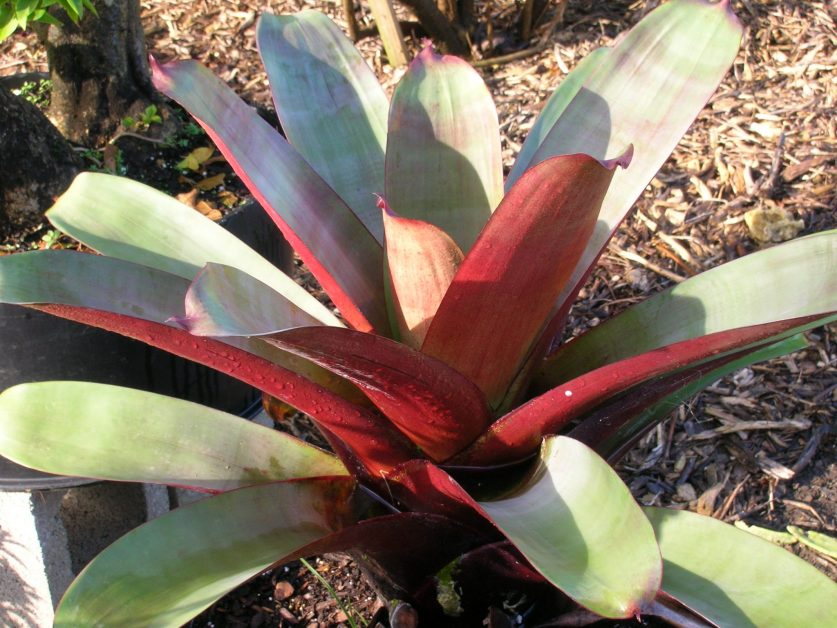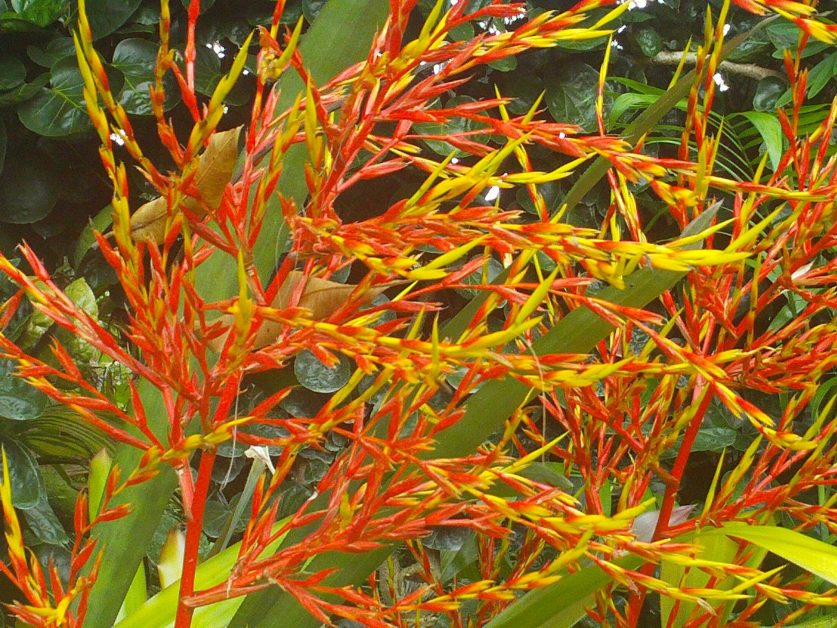Ground Covers You May Not Have Thought About, Part IX
Richard Lyons’ Nursery today continues its survey of plants that are sometimes overlooked in their capacity as ground covers.
Bromeliads are another plant family comprising species which function well as ground covers. Terrestrial bromeliads, i.e., those species capable of growing in the soil, can be massed to create very striking, colorful ground covers to complement or interrupt the monotony of turf grasses. This use of bromeliads was popularized by Roberto Burle-Marx, famed Brazilian landscape architect/artist. Here are a pair of sun-loving species which we at Richard Lyons’ Nursery recommend:
Giant Bromeliad or Imperial Bromeliad, Alcantarea imperialis ‘Rubra’: This species is endemic to Brazil, specifically the rocky, dry mountainsides of the Serra dos Órgãos (Organ Range) of Rio de Janeiro state. It grows slowly to a diameter of 4-5 ft. and a height of 4 ft. Its leathery leaves, green on top and burgundy beneath, reach 5-6 in. in width. Following a buildup of many years, this imposing plant produces a stout red flower stalk that may hit 7-10 ft. in height, bearing white flowers attractive to butterflies and birds. This bromeliad is not demanding; in fact, too much fertilizer will diminish the strong coloration of the leaves.
Bromelia naranja (Orange Bromeliad), Aechmea blanchetiana: Individual plants of this species grow about as tall as Alcantarea imperialis, but not nearly as wide. However, it pups freely to create a spreading ground cover. Though its upright yellow-orange leaves brighten any setting, its inflorescenses, composed of showy red and yellow bracts, are the real attention-getters, whether from humans, butterflies or hummingbirds. The flower stalks not only persist for months, but may also be utilized in cut arrangements. Like Alcantarea, it is undemanding of anything but good drainage.
- Alcantarea imperialis (Imperial Bromeliad)
- Aechmea blanchetiana (Terrestrial Aechmea Bromeliad)
- Aechmea blanchetiana (Terrestrial Aechmea Bromeliad)



